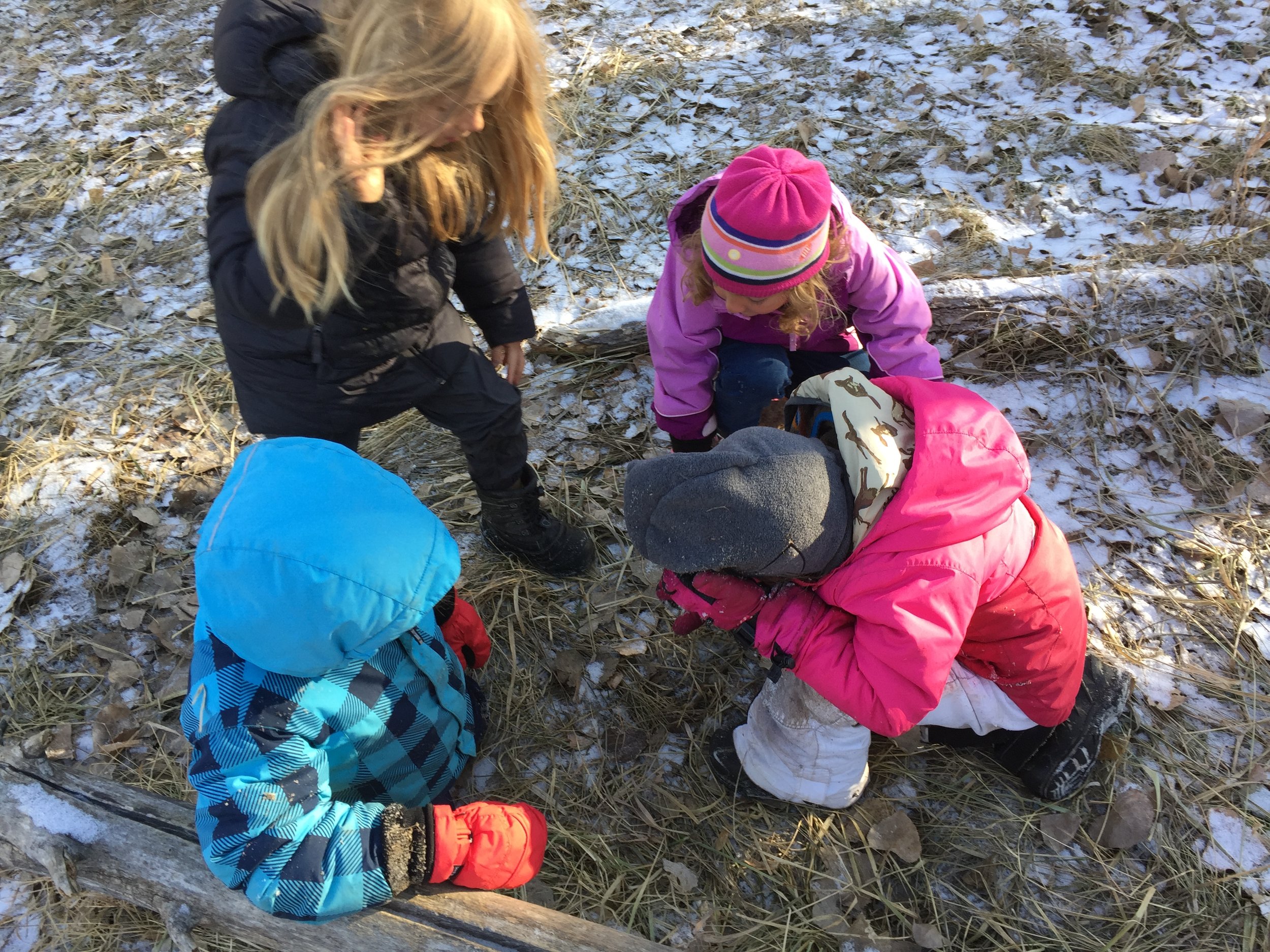Early December
It is now the final weeks of autumn in the forest, and we’ve seen a swift transformation to a wintery landscape. The geese continue to pass overhead on their way to gathering sites nearby. Magpies dominate our tree canopy—though we have had a few great horned owl sightings as well. The deer have been less visible, but the rabbits continue to enthrall us as they spring from the thickets and disappear into the bushes. We are lucky that Jack Frost tends to leave enough ice and snow on the ground that we can track which animals have been active before we arrive. The kids are getting to be quite familiar with deer, bird and rabbit tracks, and are beginning to make meaning from the direction, shape and location of the marks the creatures leave. Some of the children are spending time sitting in silence and stillness waiting for a rabbit to appear. They also have been fascinated with trying to track the rabbits using clues, such as scat and tracks.
Our Wednesday location has plenty of bear scat to investigate. This particular scat taught us why we need to pack our trash out of nature, because it contained some plastic that the bear had ingested.
This crew is tracking rabbits and found a tiny clue: rabbit scat. They were hot on the trail until the tracks vanished in the grass. This nature sign helped them know they were on the right path.
At the beginning of fall, the children were asking lots of questions about where animals and insects go in winter. We are starting to discover answers to some of these questions. One of our favorite creatures, the crayfish, was the source of many of these questions. The children realized the pond would freeze in winter…and then what would happen to our pinchy pals? Well, last week we enjoyed the opportunity to peer through thick and clear ice and spot the hardy crustaceans alive and well beneath the ice, creeping through the liquid water below. We will continue to observe the changes in how animals live throughout the year.
One of the older children setting a safety boundary on the shallowest end of the pond where the ice was perfect for sliding and crayfish-viewing.
The goose migration has been a source of inspiration for dramatic play. Preschool children tend to study animals best by becoming the animals. This has taken the form of nest-building, group running while organized in a V-shape, lots of honking, and fleeing from imaginary predators. While being a rabbit or a goose, the children appear to experience almost unbearable joy at being chased by a friend who is embodying a cheetah or fox. According to experts on the subject of play, this type of game is deeply engrained in our roots—it is amazing to watch the invented stories and action!
This flock of geese took turns leading the V, just like real geese do. The lead goose expends more energy while the others draft behind. They take turns in the name of efficiency; we do it in the name of ornithology…and kindness!
These geese built a nest and now they are bringing food to their gosling.
The children continue to amaze us with their empathy and caring. Each child brings so much wisdom and kindness to our group, and we appreciate and cherish every one of them.





